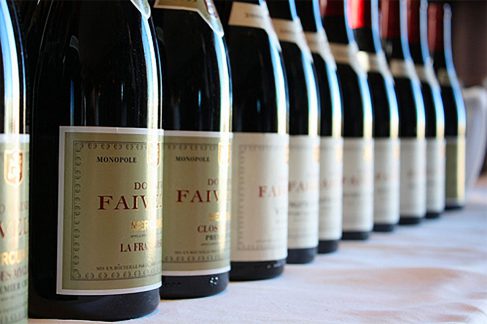Burgundy 2009 – A Drinker’s Vintage Par Excellence
In Burgundy, a relatively tiny wine region in total surface, but marked by vast differences in climate, soil and wine-making styles, any generalization about a given vintage is difficult, if not downright dangerous. So experts from Jancis Robinson MW to Stephen Tanzer will tell you in their postings, articles and books. This cautionary note applies equally to the appellation’s red (Pinot Noir) as well as white (Chardonnay) wines.
But at yesterday’s New York Burgundy Barrel Tasting hosted by Frederick S. Wildman & Sons Ltd., a fine wine importer established in 1934, the consensus among both French winemakers along the Côte d’Or, encompassing the Côte de Nuits and Côte de Beaune, as well as merchants attending the event (savvy wine buyers at top NYC wine and spirits stores and restaurants) all agreed that 2009 is a “drinker’s vintage par excellence,” as Alain Burguet of Domaine Alain Burguet said, most of whose wines come from select parcels located in and around the village of Gevry-Chambertin.
What this translates to is that for many of these wines, reds and whites, they are drinkable right now, without all the fuss, bother and impatience obliged by a so-called historic or “once-in-a-century” vintage, hyped by vignerons and wine journalists alike. Reputed vintages like 2000 still need years, if not decades, say some, to reach their apex of appeal, complexity and sensuous length.
Two thousand and nine is a “vintage of pleasure,” says, Martin Sinkoff, Director of Marketing, Fine Wine, at Wildman, whose portfolio includes Domaine Christian Moreau Pere & Fils, Maison Olivier Leflaive, Domaine Meo-Camuzet and Domaine Faiveley, among others. He added the 2009 whites are “aromatic, sweet and plump….almost gulpable….”
For those of us on tighter budgets, and as wine lovers we know that good Premier Cru and Grand Cru Burgundies are very dear and of extremely limited production compared to most any Bordeaux château, I would ask your local merchant to recommend a simple 2009 Burgundy appellation as a starting point in terms of affordability.
Here is a prime example: the 2009 Olivier Leflaive Bourgogne, Les Sétilles, this a delicious Chardonnay from a world-renowned Burgundian winemaker. Selecting lots from across the Burgundy appellation, this wine in recent vintages retails often under $20 a bottle and offers terrific value for the intrinsic quality of the wine. It goes without saying Leflaive’s 2009 Premier Cru and Grand Cru offerings cost much, much more; but for a starting point, Les Sétilles is a wonderful introduction to this vaunted vigneron. And the precise reason a Leflaive Burgundy is a relative bargain, is because Olivier, thanks to his contacts and insistence on quality, is able to assemble, blend and bottle this wine from some of the choicest parcels and fruit in all of Burgundy; a capability very few other Bourgogne Blanc producers or marketer can claim.
Another case in point, and back to Domaine Alain Burguet: its 2009 Bourgogne Rouge, which could retail for under $40-$50 a bottle, may be considered an absolute steal! Why? Well, according to Alain, this wine comes strictly from the Gevry village, so that even though the wine doesn’t merit the village appellation status, which the next rung up the quality ladder, followed by Premier Cru and then Grand Cru (the latter designation, the ultimate in Burgundy and costing well into hundreds of dollars a bottle), this modest “little” Bourgogne Rouge is sumptuous, rich, balanced and shows remarkable finesse, fruit and “gulpability.” The parcels Burguet draws this fruit from are cheek-by-jowl from some of the highest-rated plots in the same village, but because of the complex web of appellation status, these particular vines, good as they are, never qualified for a higher ranking. So the fruit from these holdings are a relative bargain, hence the agreeable retail price and great value such a wine represents.
If armed with a bigger wallet and budget, don’t miss enjoying Burguet’s (and others from Wildman’s Burgundian portfolio) Premier Crus: Gevry-Chambertin, Les Champeaux, or his Vosne-Romanée, Les Rouges du Dessus.
It all goes to demonstrate that Burgundy will always remain an extremely complicated region to get to know and you must really rely a great deal on the stature of the importer, the reputation of the specific grower and dig down further and learn something about each respective bottling, so you don’t fall prey to overpaying for a mediocre wine. It’s work, but who’s really complaining when such rewards are only a corkscrew turn or two away!

